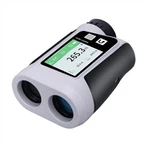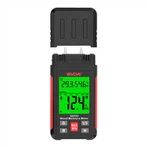A Simple Method for Distinguishing Zero and Live Lines in a Multimeter
Generally speaking, it is necessary to use a low-voltage test pen to distinguish between the zero and live wires in the mains. Can a multimeter be used to distinguish between the live and zero wires? The answer is affirmative, as follows:
Turn the range switch of the multimeter to the AC voltage range of 250V or 500V. Connect the black probe to the damp ground or ground of the indoor water pipe worker, and the red probe to the power cord or socket. The voltage value indicated by the multimeter is higher as the live wire, and the voltage value indicated by the multimeter is lower or zero as the zero wire
Place the multimeter in the AC voltage range of 250V, with one meter rod connected to a wire and the other in contact with the wall or ground. (If the wall or ground is particularly dry, use water to make it damp, which can be more effective.) If the multimeter pointer is not moving, it indicates that the wire is zero, and if the pointer is deflected, it indicates that the wire is live. When we need to distinguish between live wire and zero wire without a test pen in hand, we only need a multimeter to complete the test. There are three methods as follows:
The first method: If you don't have a test pen in your hand and only have a multimeter, you can use a multimeter to distinguish between the live wire and the zero wire under normal voltage. Connect one probe of a multimeter to a live or neutral wire, and the other probe to a ground or wall, metal water pipe, etc. If there is voltage (usually greater than 20V), it is a live wire; If there is no voltage, it is the zero line.
The second method: First, we need to understand the principle of a test pen. The pen is composed of a metal rod, a neon bubble, a carbon resistor, and a metal cap. The neon bubble is a device that can emit light, a glass ball filled with inert gas, and the voltage of the carbon resistor is 1M ohms or above. The metal cap is the part where human hands come into contact. When a person comes into contact with the metal cap, the live wire, the pen, the human body, and the earth form a circuit. There is a capacitance of about 100PF between the person and the earth, and the circuit is formed in this way.
When we use a multimeter to measure, whether it is a digital or pointer type multimeter, after understanding the approximate range of power supply voltage, we take 220VAC voltage as an example, adjust the multimeter gear to 400VAC, connect the red probe to the live wire or zero wire, and touch the black probe with your hand. If the multimeter shows a reading, it indicates that it is a live wire; If there is no reading display, it is the zero line.
It will not cause any danger to the human body. The reason is that the internal resistance of the digital multimeter is 10M ohms, and the internal resistance of the pointer meter is 20K ohms/V. If the voltage is measured at 220V, the internal resistance of the pointer meter is 20K × 220V=4400 ohms, which is absolutely safe because the carbon resistance of the electric pen is generally 1M ohms.






